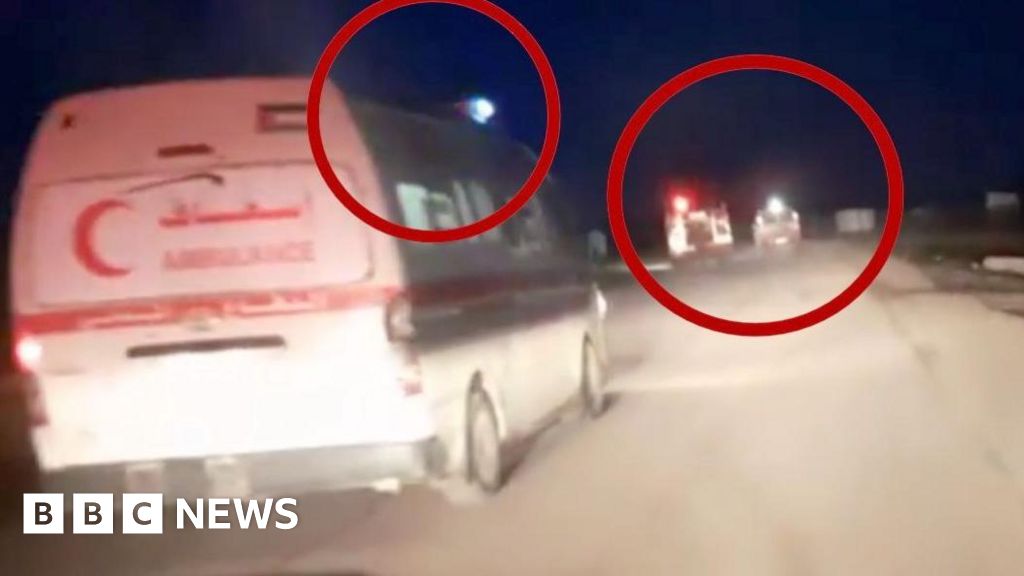IDF Report Attributes Gaza Medic Deaths to 'Professional Failures'

A troubling report by the Israel Defense Forces (IDF) has concluded that a series of 'professional failures' contributed to the tragic deaths of fifteen emergency workers in Gaza last month. This incident, which occurred on March 23, has drawn significant attention and condemnation from various humanitarian organizations, particularly the Palestine Red Crescent Society (PRCS), which has described the IDFs findings as 'invalid' and indicative of an attempt to shift responsibility away from the militarys actions.
The investigation revealed that among the fatalities were fourteen members of emergency response teams and a United Nations worker, all of whom were tragically caught in crossfire when a convoy comprising PRCS ambulances, a UN vehicle, and a fire truck came under fire from Israeli forces. The IDF stated that their troops opened fire under the mistaken belief that they were facing a threat from enemy forces. However, the events surrounding the incident are mired in confusion and conflicting narratives.
Major General Yoav Har-Even, who led the inquiry, reported that the investigation uncovered a series of operational misunderstandings and a breach of standard orders. The IDF claimed that six of the emergency workers were affiliated with Hamas, a statement that has sparked outrage and disbelief among humanitarian organizations. The claim was further complicated by the fact that video evidence recovered from a fallen paramedics phone showed the vehicles were clearly marked as ambulances and had their emergency lights activated, contradicting the IDFs initial claims of 'suspicious' behavior.
In response to the findings, the deputy commander of the unit involved faced dismissal for providing an incomplete report during the debriefing. Additionally, another commanding officer is expected to receive disciplinary action for their overall responsibility in the incident. This decision reflects a broader pattern within the Israeli military to address accountability, as evidenced by past incidents where officers were similarly reprimanded.
During a recent media briefing, journalists were presented with aerial footage that captured the events leading up to the attacks. The footage demonstrated that several vehicles, including ambulances, passed unscathed in the hour leading up to the firing incidents, suggesting that IDF forces did not open fire indiscriminately. This has raised further questions about the military's engagement rules, especially concerning medical vehicles in conflict zones.
Humanitarian officials, including UN representatives in Gaza, have criticized the IDF report for lacking genuine accountability and a thorough investigation. Jonathan Whittall, a UN official, expressed concern that without real accountability, international law would continue to erode, making the world a more dangerous place for civilians caught in conflict.
Initially, the IDF claimed that the military opened fire due to a lack of coordination regarding the convoys movements and the absence of headlights or flashing lights. However, the subsequent release of video evidence proved otherwise, revealing that the vehicles were indeed using their emergency signals at the time of the shooting. The grim footage captures the final moments of the paramedics life and highlights the chaos and confusion prevalent in such environments.
The aftermath of the shooting has also led to severe logistical challenges in recovering the bodies of the deceased workers, which were not uncovered until a week after the incident due to safety concerns and the inability of international agencies to access the area. Furthermore, the IDF confirmed the detention of a PRCS medic, identified by the International Committee of the Red Cross as Assad al-Nassasra, whom they apprehended following the tragic events.
The call for an independent investigation into the incident has been echoed by the Red Crescent and other humanitarian organizations, emphasizing the need for transparency and accountability in military operations that affect civilian lives. The IDF's actions in this case are not isolated; they reflect a history of military engagements where humanitarian workers have found themselves in perilous situations.
As the situation continues to evolve, the Israeli militarys recent offensive in Gaza has raised alarms, especially considering that more than 51,201 people have reportedly been killed in the ongoing conflict since October 2023. This ongoing violence underscores the pressing need for diplomatic resolutions and protective measures for civilians caught amidst military confrontations.




























